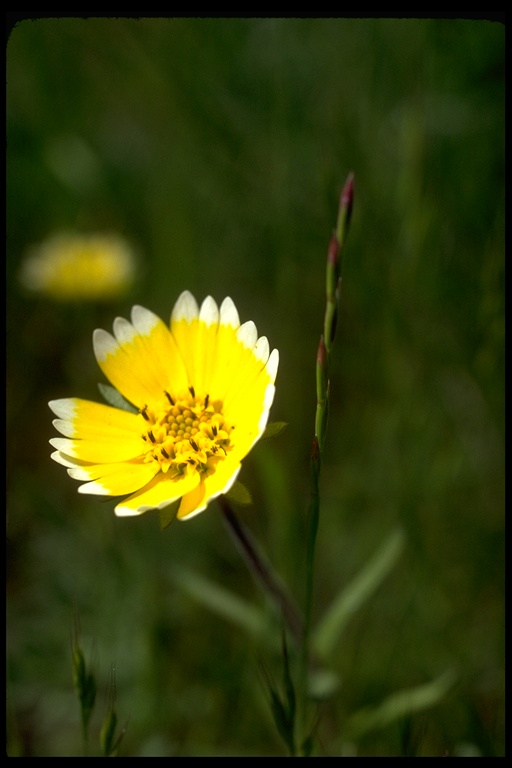Plants 3-70 cm (self-incom-patible); glandular, not strongly scented. Stems usually not purple-streaked. Leaf blades lanceolate or oblanceolate to linear, 4-100(-120) mm, margins (basal leaves) toothed to pinnatifid. Involucres hemispheric, 4-18 × 4-15+ mm. Phyllaries 5-18, apices often longer (sometimes shorter) than folded bases. Paleae in 1 series between ray and disc florets. Ray florets 5-18; laminae yellow or proximally yellow and distally white, 3-21 mm. Disc florets 6-120+; corollas 3.5-6 mm; anthers ± dark purple (in southwest of range, sometimes yellow or brownish). Ray cypselae glabrous or sparsely hairy. Disc pappi 0 or of 14-32 white to tawny, ± equal bristles or setiform scales 2-5 mm, each ± scabrous, usually not plumose and not adaxially woolly (in southwest of range, often proximally plumose and adaxially woolly). 2n = 14.
Flowering Feb-Jul. Open, often grassy slopes or flats, disturbed sites, often on sandy or clayey soil, sometimes serpentine; 0-2000 m; Calif.; Mexico (Baja California).
Layia platyglossa occurs from the North Coast Ranges through central-western and southwestern California and west to the immediate coast and east into the central Great Valley. A specimen reported by S. L. Welsh et al. (1993) from dunes in Utah (Harrison 2545, BRY) may be mislabeled.













